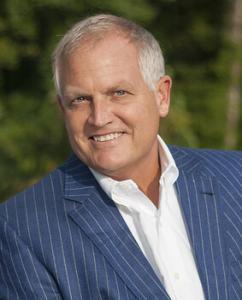I was so worried about failing that I strongly considered forgoing the opportunity, despite the fact that I wanted it badly. Now, admitting to your boss that you’re scared of failing is hard to do in any company. It is particularly hard to do in a company made up of hotshot consultants. But I was fortunate to be working for Hines Brannan, a seasoned and level-headed senior partner. Hines had a way of lifting my head up past the speed bumps of the moment so that I could view my career as a winding journey. So, I went to him and said, “Hines, I think you should consider placing someone else in the new coaching role. I’m okay with coaching people at my level, but it wouldn’t be fair for me to coach people who are more senior than me. I mean, I’ve reported to some of these people in the past. The thought of coaching them is just too intimidating.”
Hines listened patiently. Then, instead of telling me what a wuss I was being, he simply said, “But Bill, you coach me.”
He was right. Like many of the senior executives I would be coaching, I reported to him. And over the years, I had become a bit of a confidant to him. In the process, I had grown comfortable offering Hines my perspective on issues and challenges that he was grappling with. I’m sure that Hines had far more impact on me as a coach than I ever had on him, but in the moments when I had coached him, he had drawn value from it. By pointing out the obvious, Hines gave me permission to see the opportunity in a different way. The confidence I had already established in coaching him could be extended to working with the other executives. His words helped me to cut myself a break. Moreover, his words helped put my courage to work. After all, if I could coach the most senior executive on the account, certainly I could coach the people who reported to him.
The most important thing that Hines did was to give me permission to express my fears without embarrassment. Unlike some bosses I had worked for, Hines didn’t make me feel small so that he could feel big. With him, I never felt dismissed or patronized. He never disrespected me by multitasking when I talked with him, despite his pressing schedule. To the contrary, when I approached him, I always had his full presence and attention. I felt valued, not intimidated. Because Hines’s disposition permitted me to express myself without fear, when I did, he was in a much better position to provide me with good counsel. Had I reported to another executive, I would have been much more reluctant to express my fears and concerns.
More tangibly, Hines gave me permission to be courageous by pointing out where I was already doing the very thing I was afraid of. This was incontrovertible proof that I could indeed meet the challenge . . . because I was already meeting it. Armed with this knowledge, I was able to build up a thriving internal coaching practice, eventually coaching thirty Accenture executives on a regular basis.
Permission enhances safety. Often workers avoid doing courageous things because their heads are telling them that they aren’t “allowed” to. As a manager, how you carry yourself will make a big impact on how safe they feel and, thus, on how expressive they will be. By giving them your full presence, you’ll cause them to feel valued and “allowed” to bring their fears out in the open. When they do, you’ll be better able to address their concerns and shift their thinking to all the ways they are prepared to meet their challenges.
Who on your team needs to be given permission to be courageous?
















